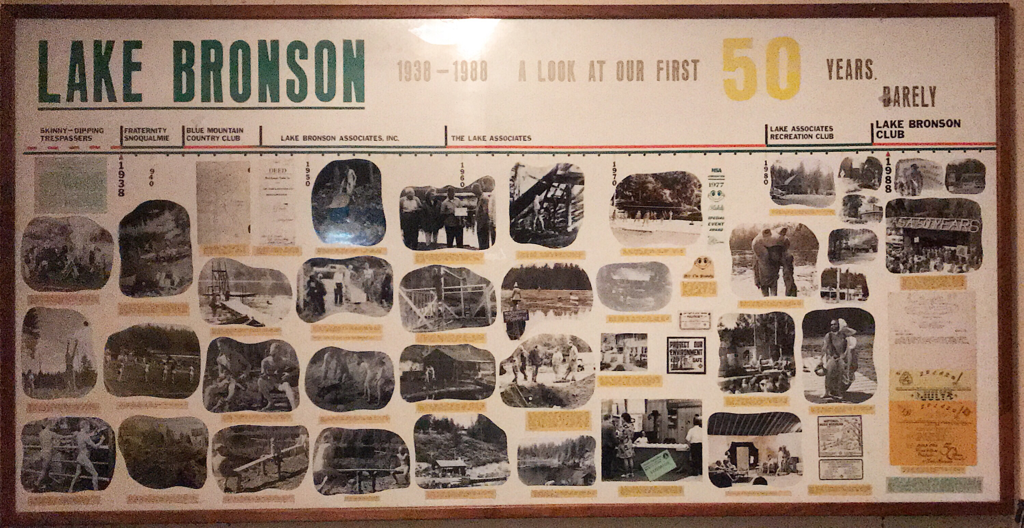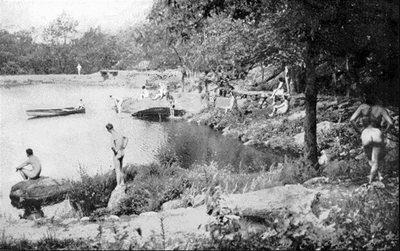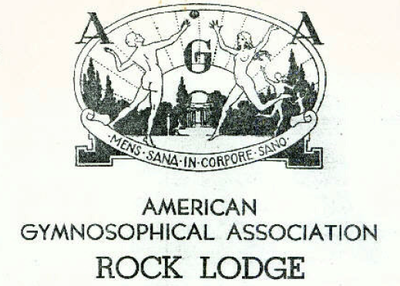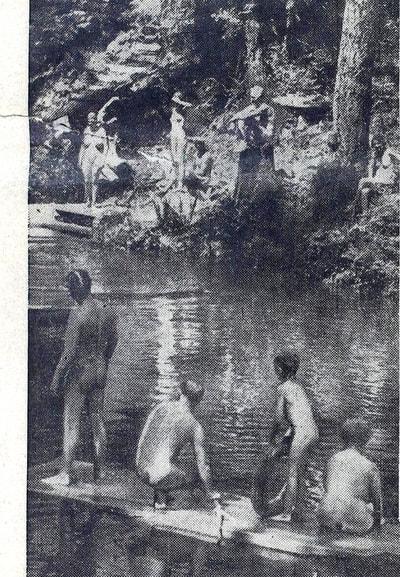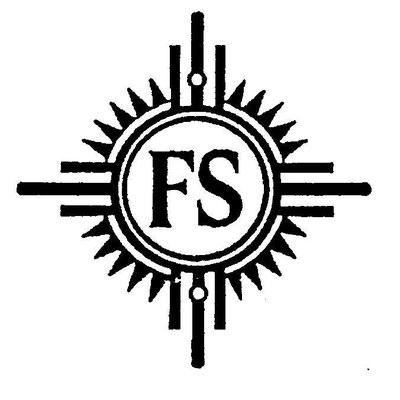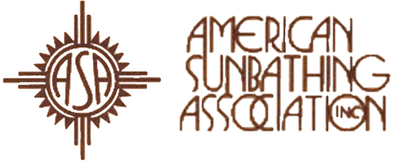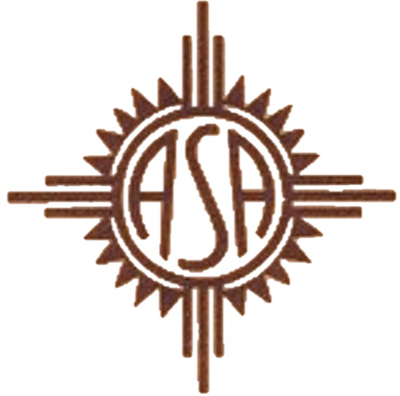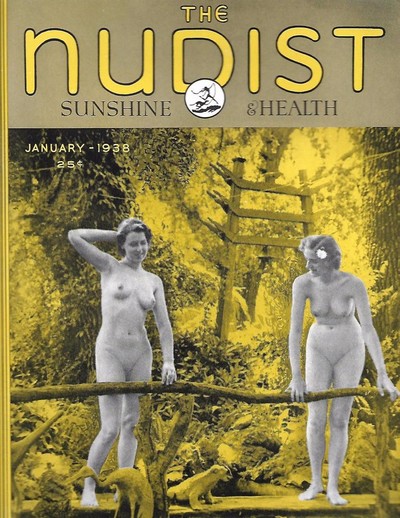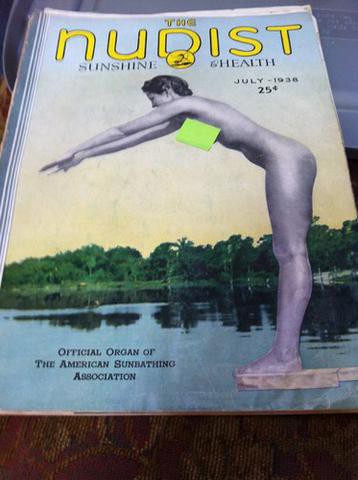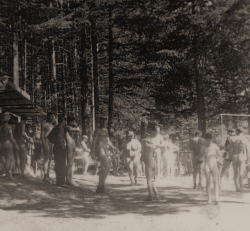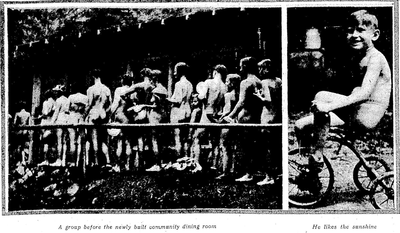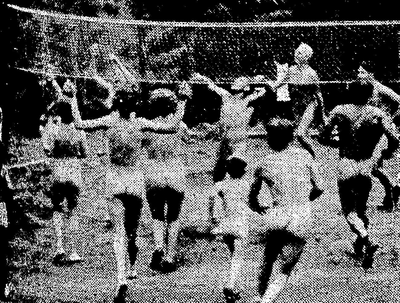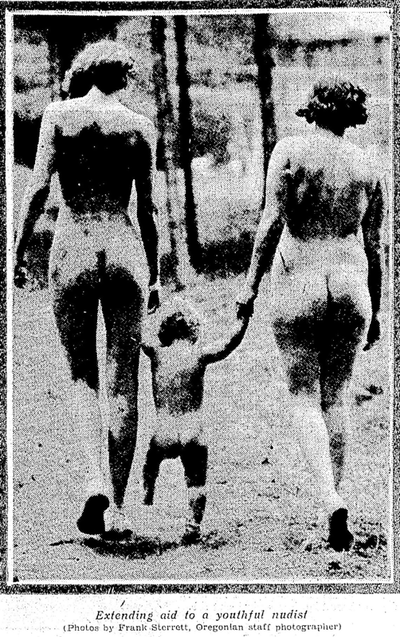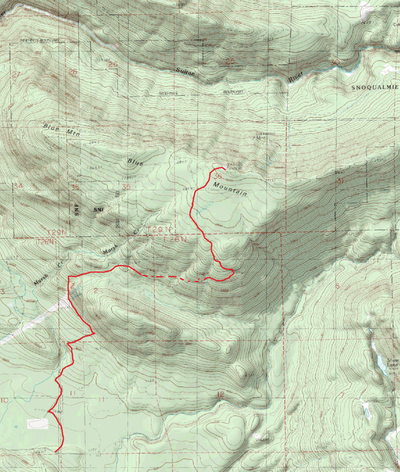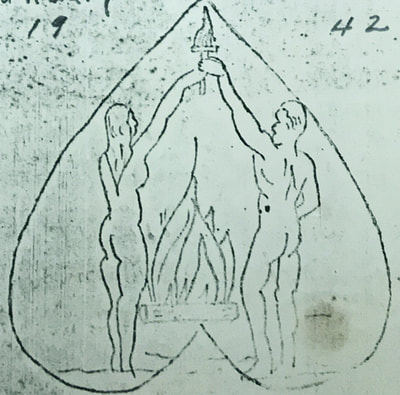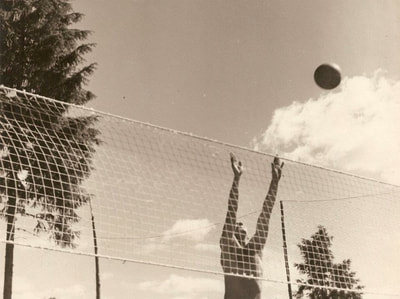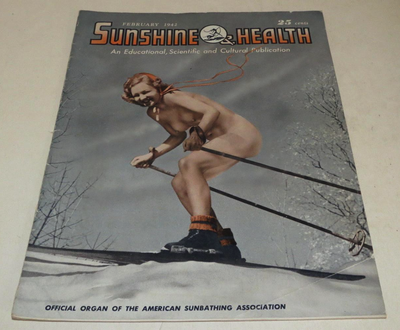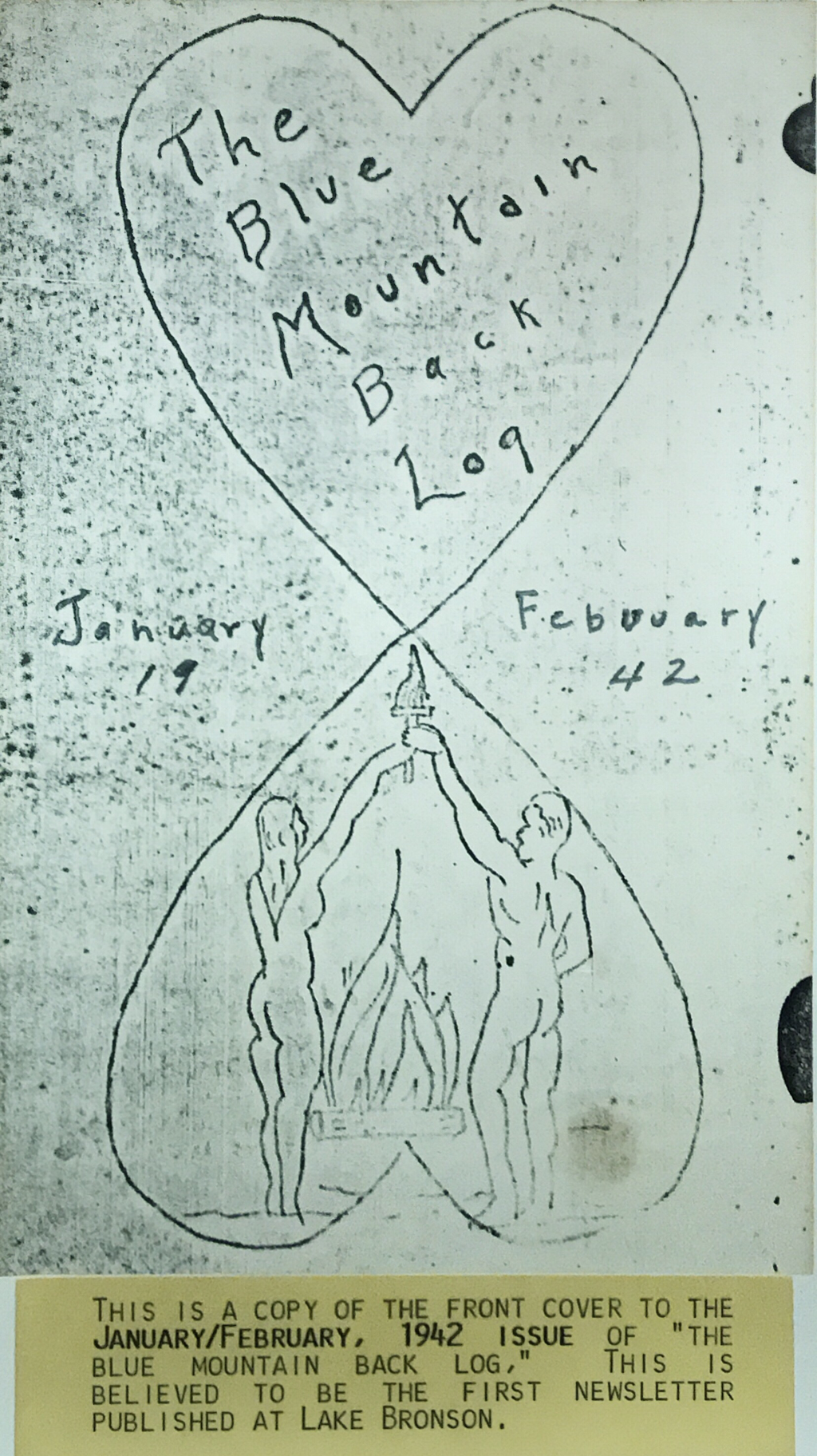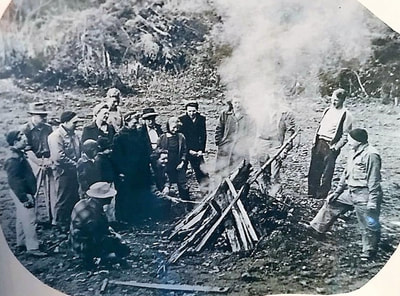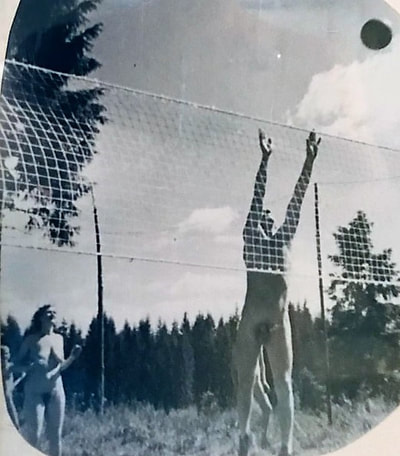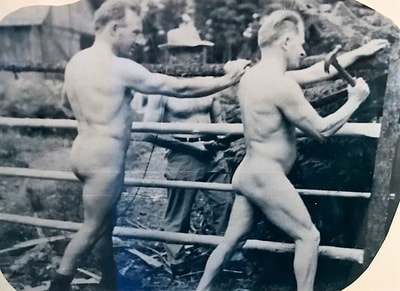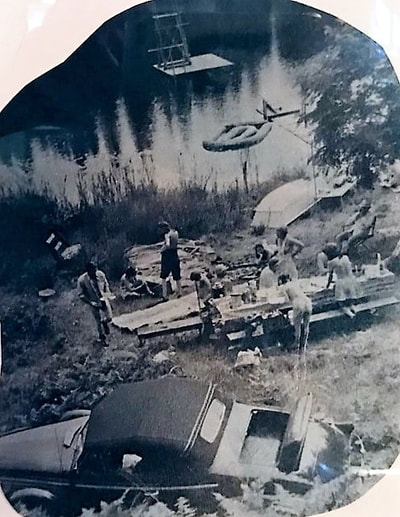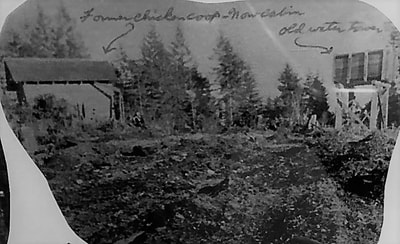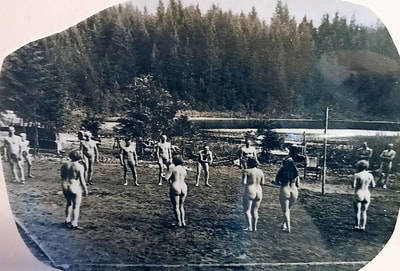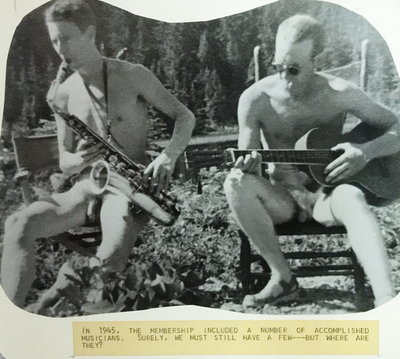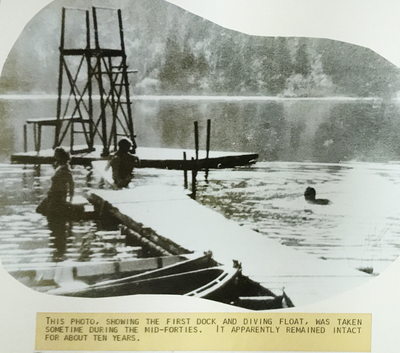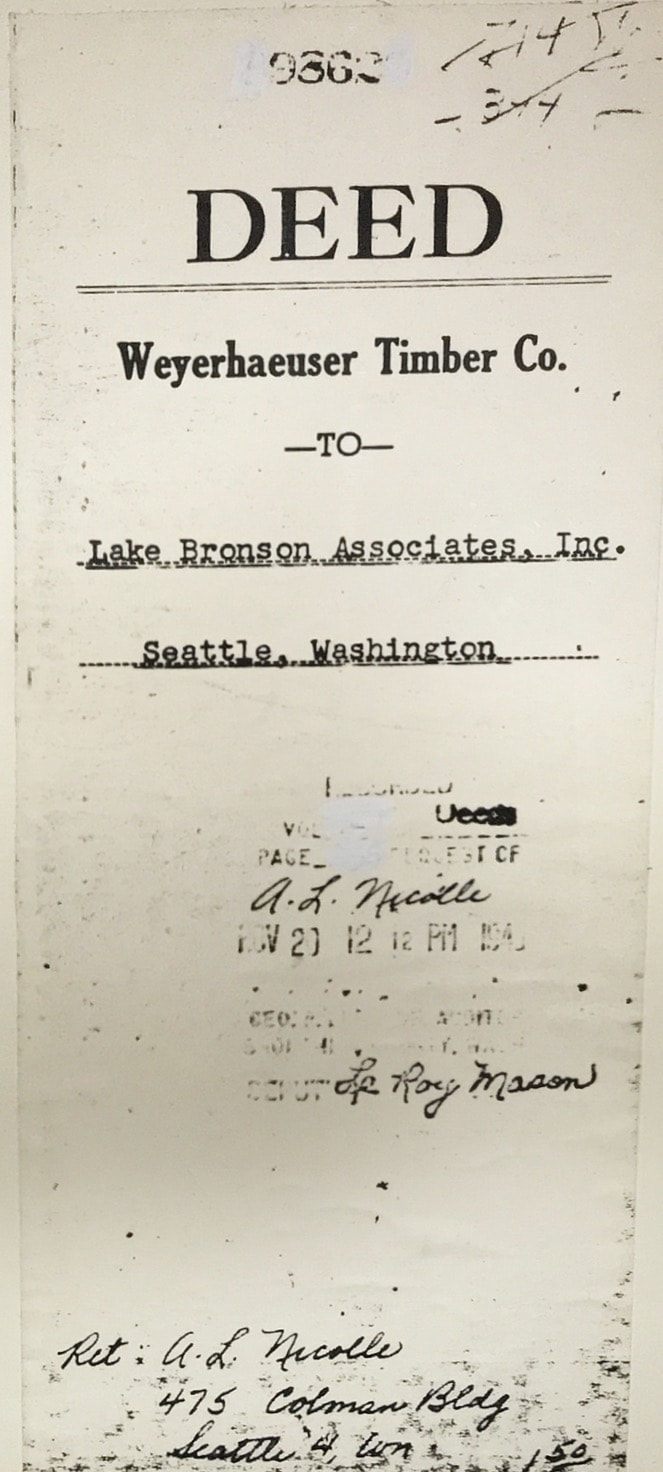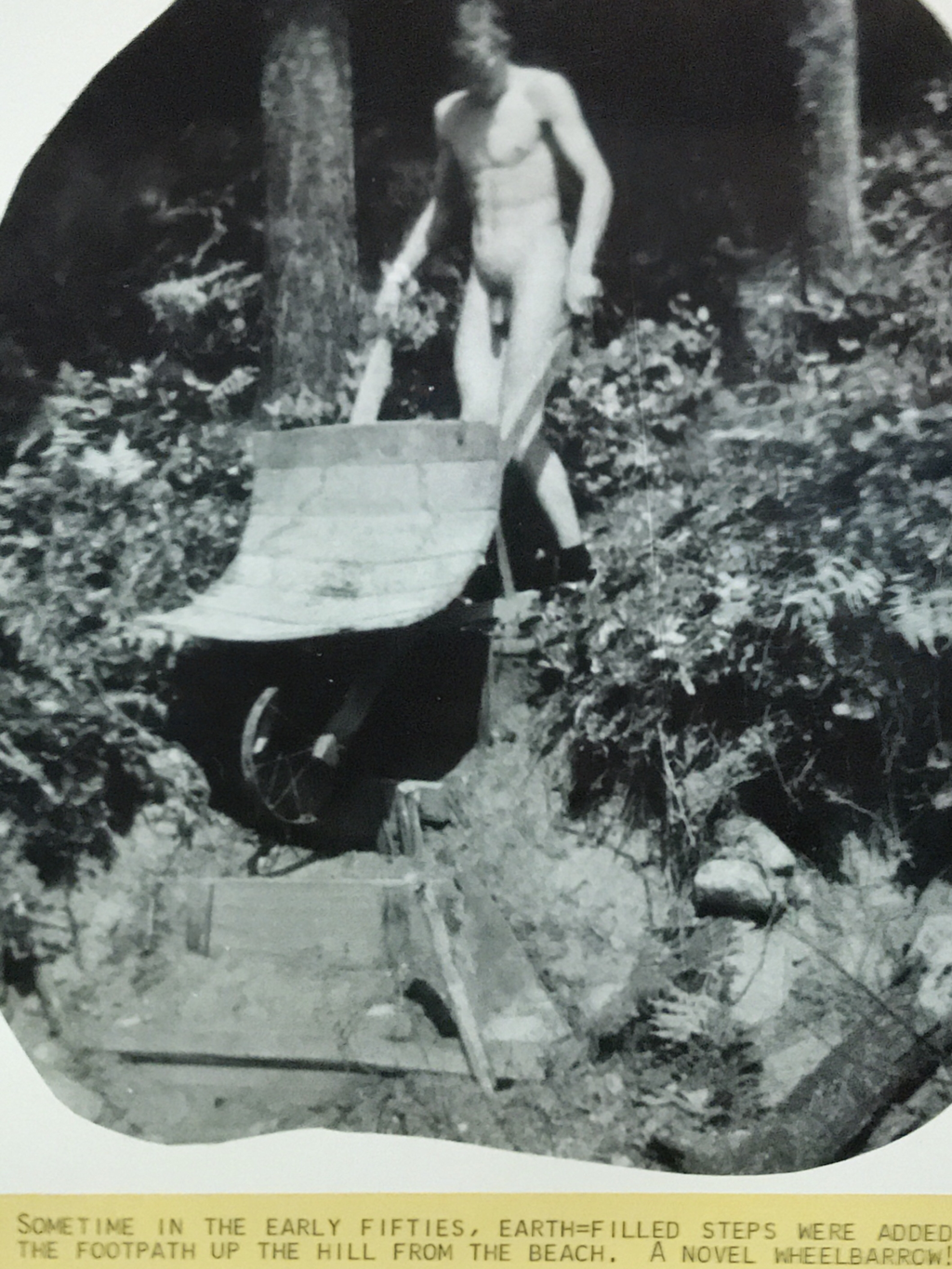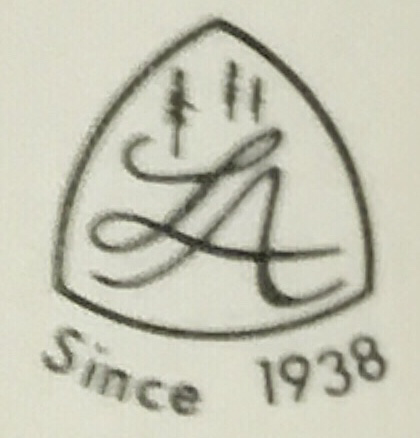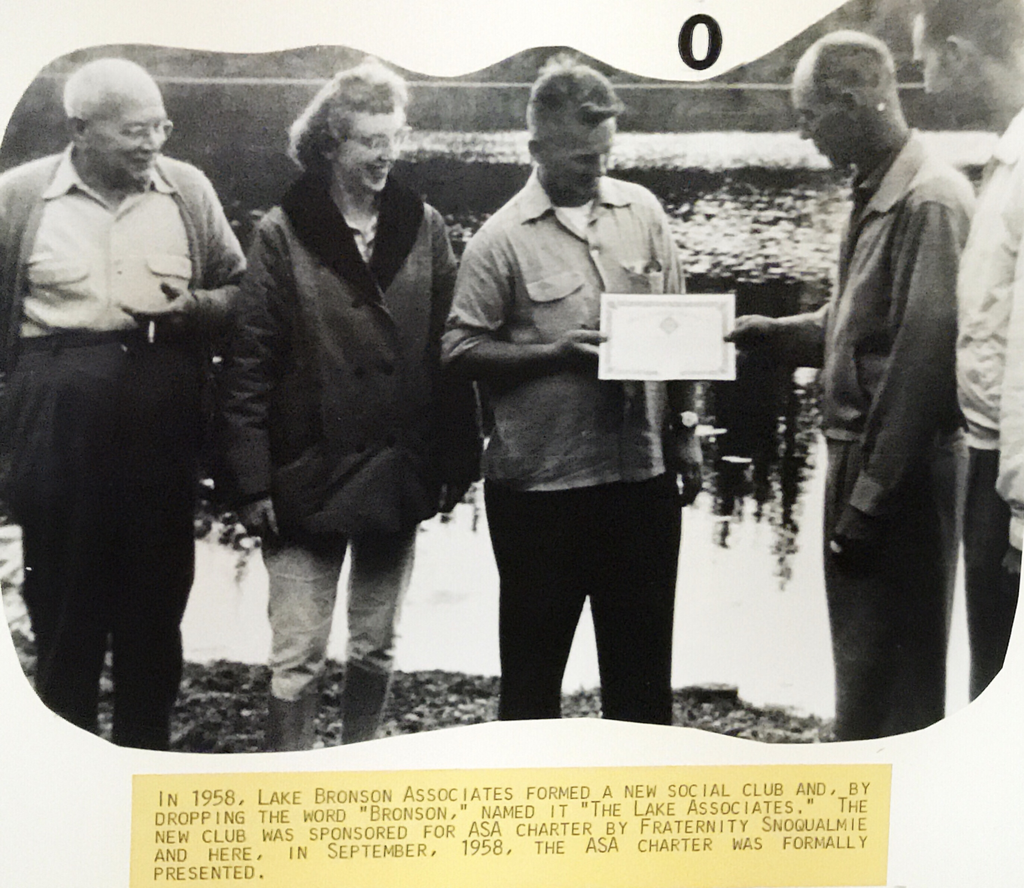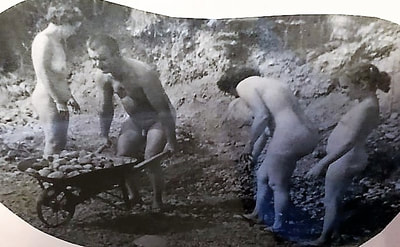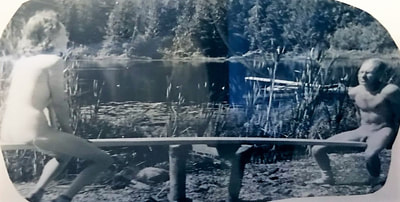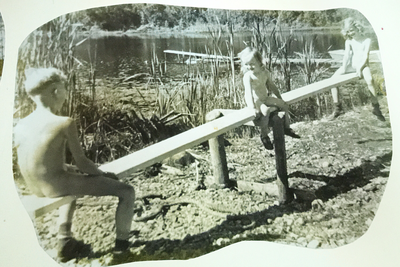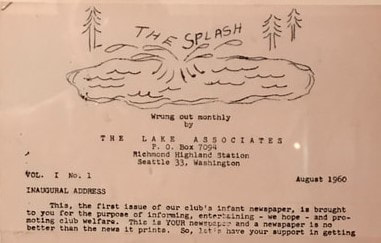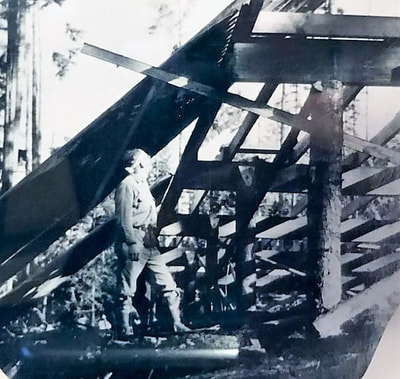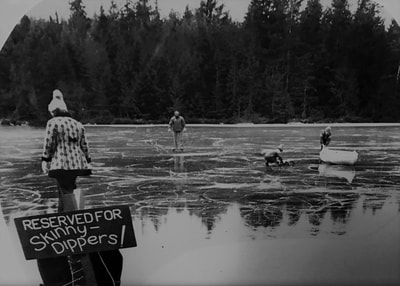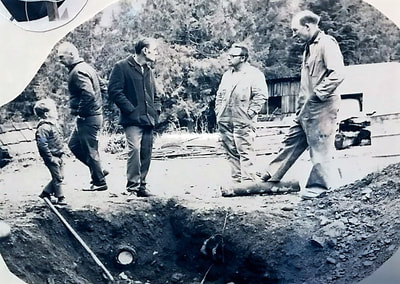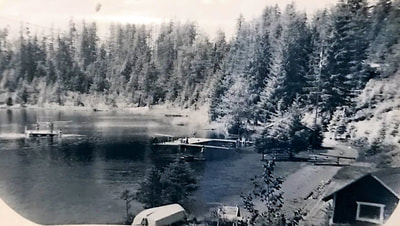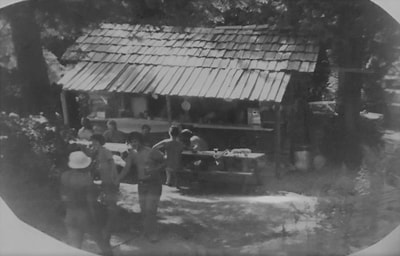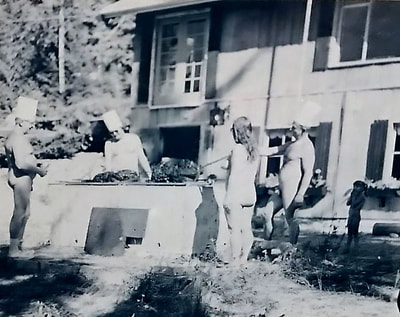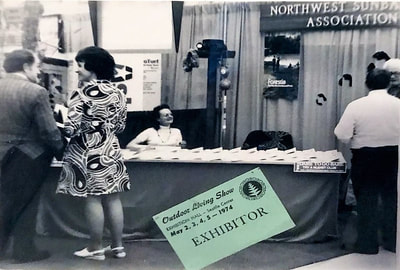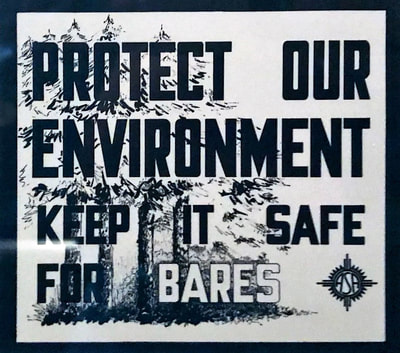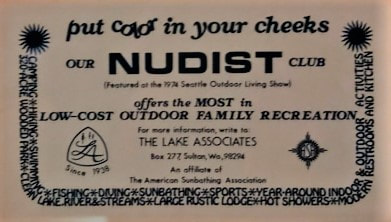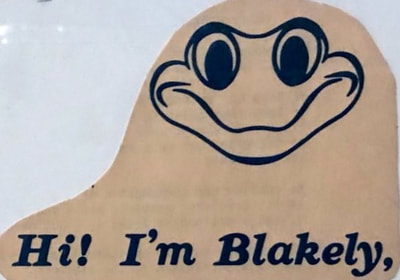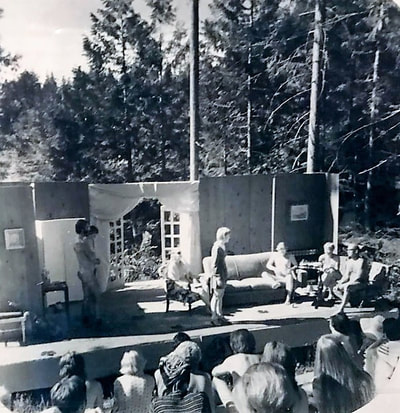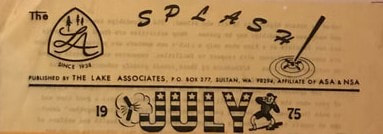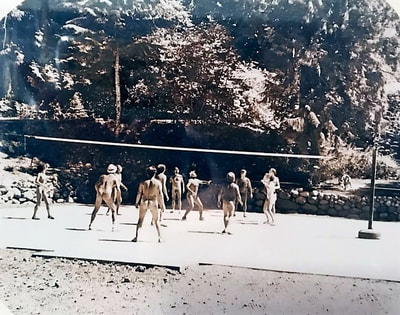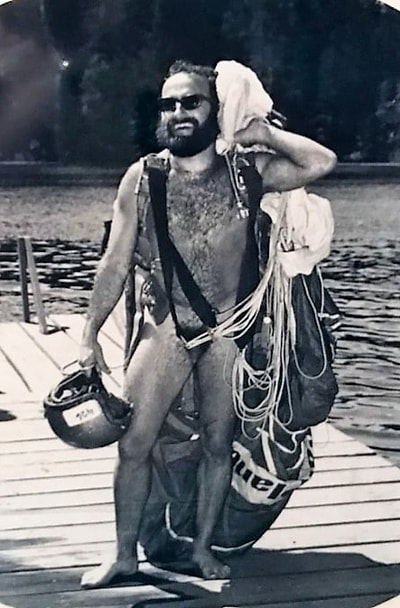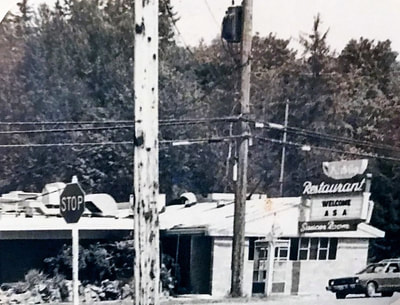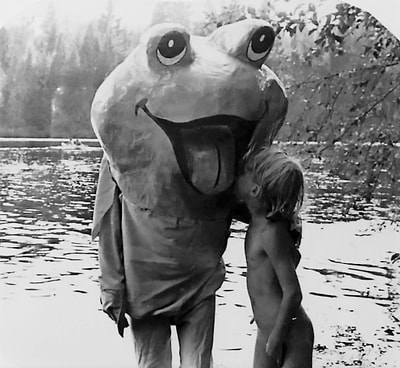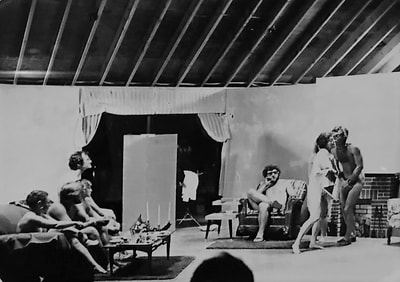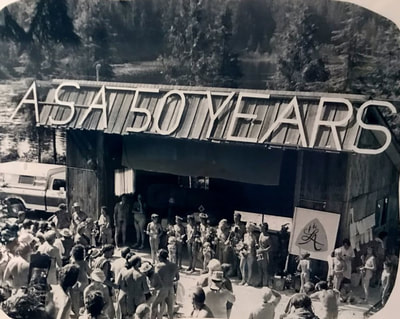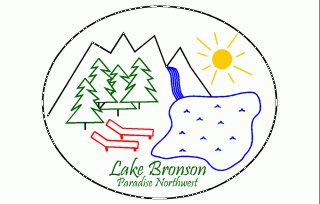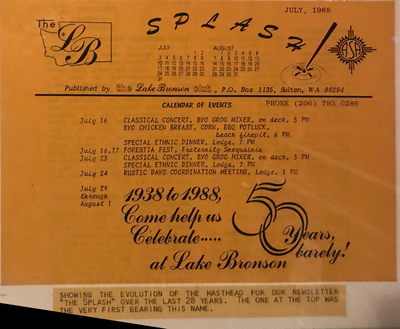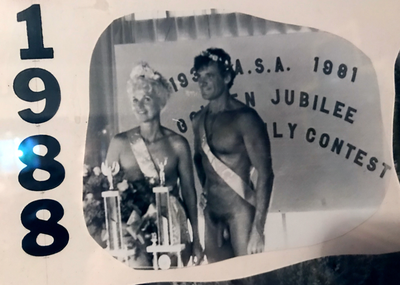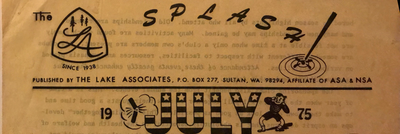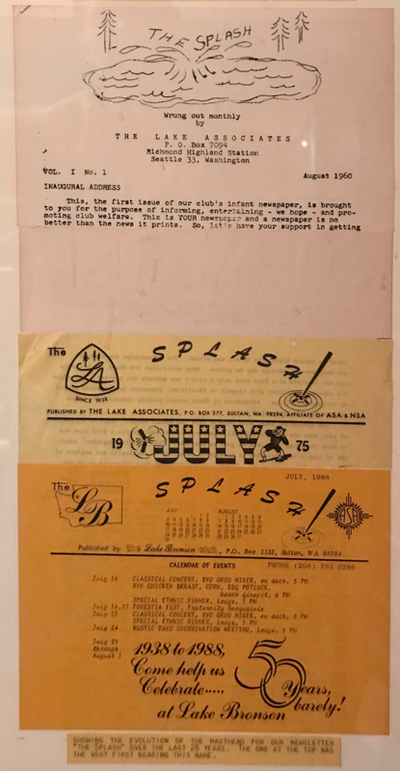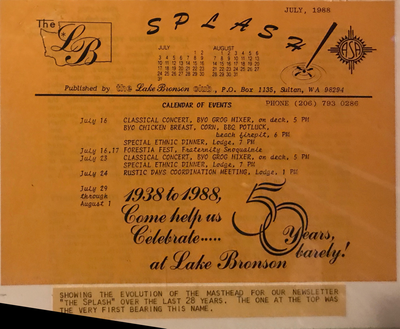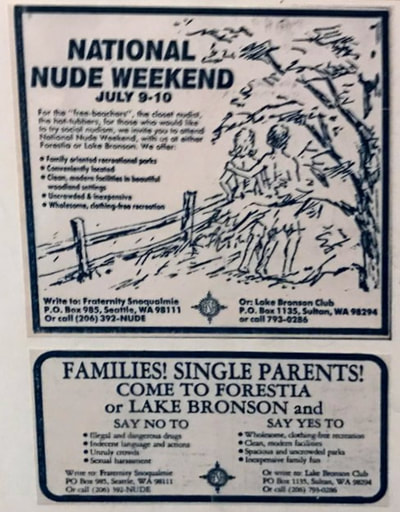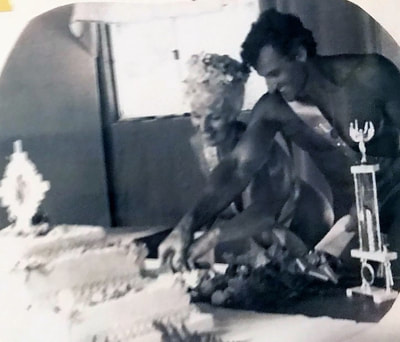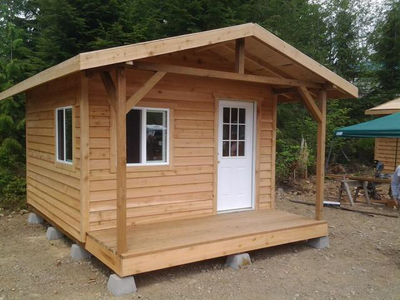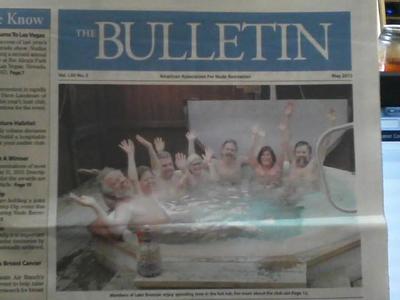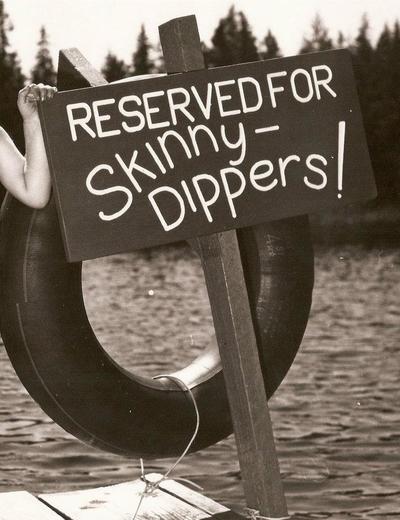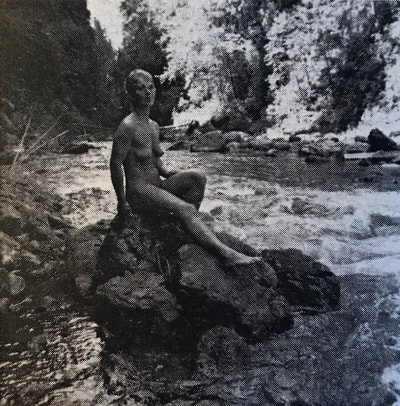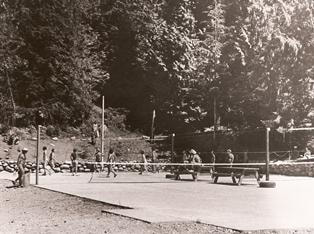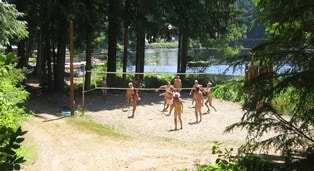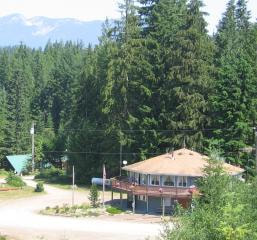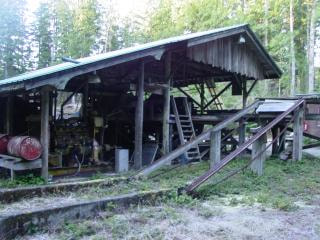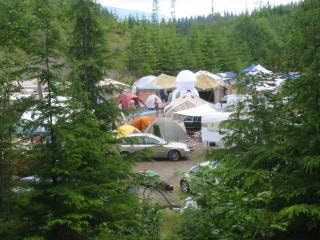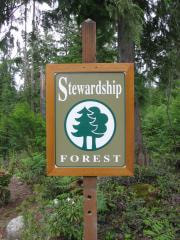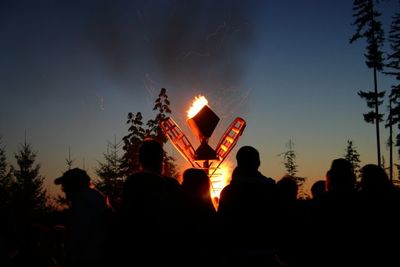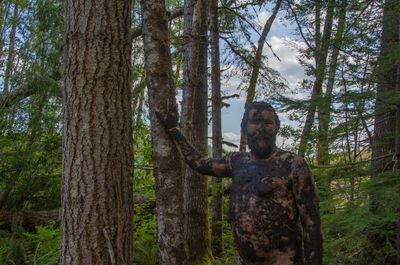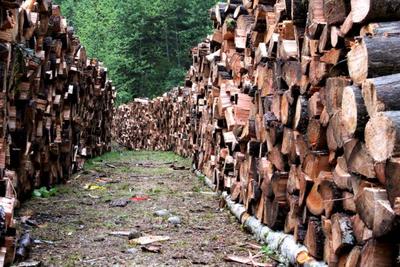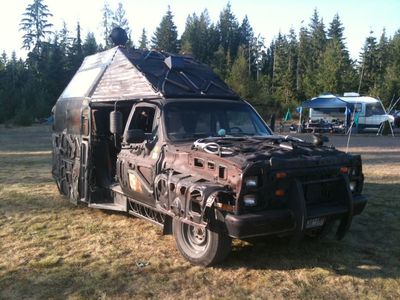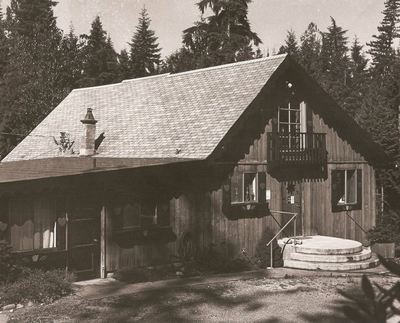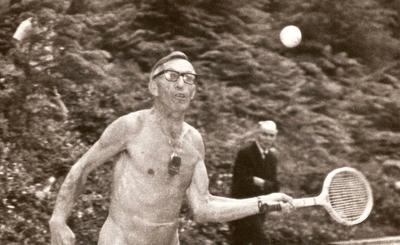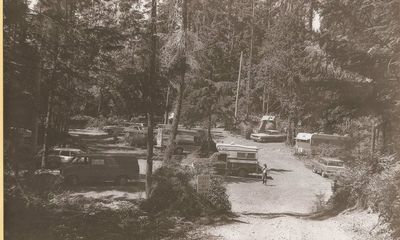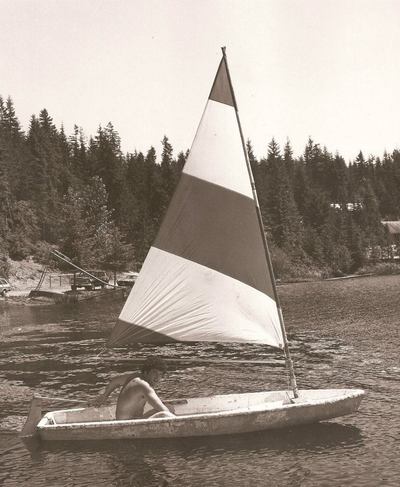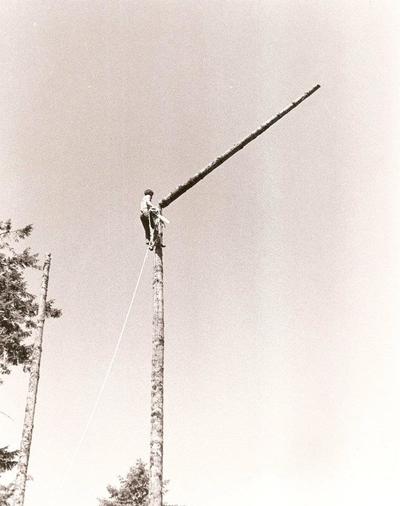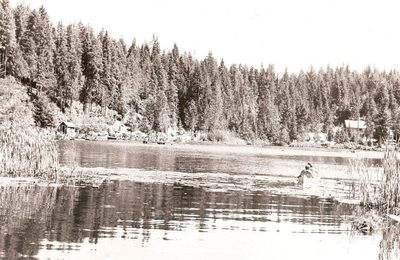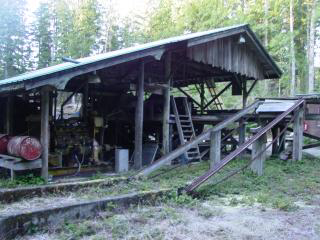A look at our first 80 years
Pre-1938 - SKINNY-DIPPING Trespassers
The colonial era gave way to a free and independent United States of America, "radical thinkers," including Benjamin Franklin and Henry David Thoreau, publicity lauded the benefits in daily naked walks, or as they were called, "air baths." Other nudists of note included President John Quncy Adams, who regularly bathed nude in the Potomac, as did the much beloved fictional characters of Tom Sawyer and Huck Finn who skinny dipped with joy and abandon. But these so-called radicals continued to remain a very small minority of the population until the dawn of the 20th century brought more formal nudism to America.
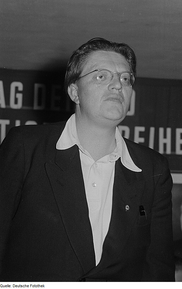 Kurt Barthel, founder of American nudism
Kurt Barthel, founder of American nudism
Kurt Barthel, acknowledged as the founder of American nudism, was acquainted with other German nudists late in the 1920s and had allowed his name to be used as a local New York contact. On Labor Day of 1929, Kurt led a small group of individuals to a picnic in the buff in the Hudson Mountains near Peekskill, New York, and organized nude recreation in America was born with his dues-paying club, called the “American League for Physical Culture” (ALPC).
The first official nudist club, Sky Farm, opened soon after on June 21, 1930, near Spring Valley in Rockland County, New York.
By 1931, ALPC had welcomed over 200 new members and moved to an area near Dover, New Jersey. Police raids soon followed as word spread. When the first criminal case came to trial at the end of 1931, to everyone’s surprise, the judge acquitted the entire group. He ruled that not only were they doing all they could to maintain their privacy, but they also were not guilty of any lewd behavior. This unexpected victory gave the nudist movement a tremendous boost. (AANR West)
The year 1933 saw several other nudist clubs and resorts open around America, some of which are still in operation today, including, The Rock Lodge Club in Stockholm, New Jersey; Squaw Mountain Ranch in Estacada, Oregon; and Kaniksu Ranch near Spokane, Washington.
Jan Gay published her book “On Going Naked,” and Michael Mindlin released his film, "This Nude World.” Both helped the public become aware of the size and significance of the nudist movement, and realize that clubs were popping up all across the nation. The public – and the politicians – were starting to feel more comfortable with the idea that showing a little skin wasn’t lewd. (AANR West)
In 1936, the law was changed in New York that decriminalized a man going topless. Up until then, if a man of his shirts to cool off, he could be arrested. (AANR West)
1937-1940 - Fraternity Snoqualmie
On July 29, 1937, a group of 11 — five single men, four single women, and one couple — held a home meeting to finalize plans to create a new nudist club in the Seattle area, and establish a constitution and bylaws. A collection was taken to place an ad in the Seattle Times on Sunday, August 1, 1937, seeking a tract of land to use for the club. Those eleven persons were declared charter members of the new club, yet to be named.
On August 5, 1937, the list of charter members grew to 12, and a President, Vice President, Secretary-Treasurer, and two Trustees were elected to office. Those officers were then empowered to get the corporation papers executed. By then, the new club had received 23 replies to their Seattle Times classified ad, and a camping trip was planned.
Plans were also made to apply for membership in the national American Sunbathers Association as soon as all the details of corporation were completed. Everyone was encouraged to contact friends who might be prospective members. The new corporation bylaws were accepted by the 12 members.
On September 16, 1937, an attorney explained the Bylaws and Articles of Incorporation, and they were signed by the club officers.
On November 6, 1937 a meeting was held in the attorney's office to transfer all assets to the new corporation, "Fraternity Snoqualmie, Inc." How did Fraternity Snoqualmie get its name? For perspective on our shared heritage, see Tiger Mountain Family Nudist Park’s article on the naming of Fraternity Snoqualmie.
On August 5, 1937, the list of charter members grew to 12, and a President, Vice President, Secretary-Treasurer, and two Trustees were elected to office. Those officers were then empowered to get the corporation papers executed. By then, the new club had received 23 replies to their Seattle Times classified ad, and a camping trip was planned.
Plans were also made to apply for membership in the national American Sunbathers Association as soon as all the details of corporation were completed. Everyone was encouraged to contact friends who might be prospective members. The new corporation bylaws were accepted by the 12 members.
On September 16, 1937, an attorney explained the Bylaws and Articles of Incorporation, and they were signed by the club officers.
On November 6, 1937 a meeting was held in the attorney's office to transfer all assets to the new corporation, "Fraternity Snoqualmie, Inc." How did Fraternity Snoqualmie get its name? For perspective on our shared heritage, see Tiger Mountain Family Nudist Park’s article on the naming of Fraternity Snoqualmie.
In the January, 1938 issue of "The Nudist" magazine, Fraternity Snoqualmie, P.O. Box 940, Seattle, Washington, was listed as one of ten new clubs whose affiliation with the ASA was in process.
On February 25, 1938, all photography rules were established. The official photographer took all pictures, processed them, and controlled them.
Delegates attended the Western Conference in August, 1938 at Hesperia, which is now Squaw Mountain Ranch. They also visited "The Beavers," a new club located near Montesano.
It was learned that the Lake Bronson property was for sale, and was known for many years to be a good skinny-dipping spot. By July of 1938, the Lake Bronson property was being used with permission of the owner.
By November 1938, the group had made a commitment to purchase the property.
On February 25, 1938, all photography rules were established. The official photographer took all pictures, processed them, and controlled them.
Delegates attended the Western Conference in August, 1938 at Hesperia, which is now Squaw Mountain Ranch. They also visited "The Beavers," a new club located near Montesano.
It was learned that the Lake Bronson property was for sale, and was known for many years to be a good skinny-dipping spot. By July of 1938, the Lake Bronson property was being used with permission of the owner.
By November 1938, the group had made a commitment to purchase the property.
In 1940 the club was still having problems making payments on the land. Many members were willing to pay dues, but refused to help pay for the property. Those helping make the payments were excused from paying club dues. Payments were left to a very few, so a corporation was formed with stockholders who made the payments out of their own pockets. Monthly payments to Weyerhaeuser were $13.
By September of 1940, there was discussion about building cabins on the property and publicity began to appear in the national magazines. The club picked up 13 new members in 1940, including several destined to become long time members.
By September of 1940, there was discussion about building cabins on the property and publicity began to appear in the national magazines. The club picked up 13 new members in 1940, including several destined to become long time members.
1941-1946 - Blue Mountain Country Club
The club become known as the Blue Mountain Country Club (Blue Mountain is a peak near Lake Bronson) in September 1941. The club dropped its membership in the ASA in September of 1941 due to national problems.
A volleyball court was completed at the top of the hill in March of 1941.
By October of 1941, a procedure had been established for allowing members to build cabins. Cabin sites were leased by contract between the individuals and the trustees. The title to the cabin after four years would revert to the corporation, but the builder would have use of the cabin as long as he remained a member in good standing and kept the cabin in repair at his own expense.
A volleyball court was completed at the top of the hill in March of 1941.
By October of 1941, a procedure had been established for allowing members to build cabins. Cabin sites were leased by contract between the individuals and the trustees. The title to the cabin after four years would revert to the corporation, but the builder would have use of the cabin as long as he remained a member in good standing and kept the cabin in repair at his own expense.
In January, 1942, the annual dues were $15 per couple, $15 for a single man, and $10 for a single woman.
An ad was placed in the magazine "Sunshine and Health” for the first time in 1942.
The first club newsletter, the "Blue Mountain Backlog,” was published quarterly.
The year 1942 also brought American involvement in World War II, and with it a host of problems such as "no bonfires on the beach,” gasoline rationing and transportation problems. Carpools were set up and funds were held for evacuation of members to the camp if necessary. To help the gas rationing problem, a gym was occasionally rented in Seattle for nude swims and games.
In September of 1942, papers were drawn up to allow the Blue Mountain Country Club to lease the property from the land owners. A motion was passed to allow any member of the armed forces and the ASA to be welcome on the grounds without a fee.
In 1942, the property was being purchased by nine couples for $25 down and $5 per month. The payments to Weyerhaeuser were $45 per month. Although there were nine parties making the payments, the actual people changed frequently. The lease agreement between owners and the club was approved.
A horn was installed under the eves of the barn to sound when gate opened unless a hidden switch was first turned off. This stopped a lot of surprised trespassers.
An ad was placed in the magazine "Sunshine and Health” for the first time in 1942.
The first club newsletter, the "Blue Mountain Backlog,” was published quarterly.
The year 1942 also brought American involvement in World War II, and with it a host of problems such as "no bonfires on the beach,” gasoline rationing and transportation problems. Carpools were set up and funds were held for evacuation of members to the camp if necessary. To help the gas rationing problem, a gym was occasionally rented in Seattle for nude swims and games.
In September of 1942, papers were drawn up to allow the Blue Mountain Country Club to lease the property from the land owners. A motion was passed to allow any member of the armed forces and the ASA to be welcome on the grounds without a fee.
In 1942, the property was being purchased by nine couples for $25 down and $5 per month. The payments to Weyerhaeuser were $45 per month. Although there were nine parties making the payments, the actual people changed frequently. The lease agreement between owners and the club was approved.
A horn was installed under the eves of the barn to sound when gate opened unless a hidden switch was first turned off. This stopped a lot of surprised trespassers.
In August of 1943, the present trail around the Lake was completed and construction of a volleyball court on the beach was started.
In early 1944, a bulldozer had been hired and a road was finally pushed through to the beach and grass was experimentally planted on the beach.
The last meeting of Fraternity Snoqualmie at Lake Bronson was held in August of 1944. To read more about their new home, visit Tiger Mountain Family Nudist Park’s article, A New Home.
The last meeting of Fraternity Snoqualmie at Lake Bronson was held in August of 1944. To read more about their new home, visit Tiger Mountain Family Nudist Park’s article, A New Home.
All the club officers had moved to the new grounds by spring of 1945. Papers were drawn up to lease the property to the Blue Mountain Country Club in 1945. Leases were also made available in 1945 for individual camp sites.
1947-1958 - Lake Bronson Associates, Inc.
Lake Bronson Associates, Inc. finally owned the property free and clear by July 8, 1948, at which time they received the deed from Weyerhaeuser Timber Company.
In 1949, the war was over, and a lot of cars were back on the road. A fence and a gate were on the Blue Mountain Road was needed to keep the trespassers out. Good job! There! That will keep those @%&#% out!
1958-1980 - The Lake associates
In 1958, Lake Bronson Associates formed a new social club, and by dropping the word "Bronson," named it "The Lake Associates." The new club was sponsored for ASA charter by Fraternity Snoqualmie, and here, in September 1958, the ASA Charter was formally presented.
The land owners formed an agreement with The Lake Associates, the new social group, with regard to finances and mutual responsibilities. The Lake Associates grew into a very successful club and remained on the Lake Bronson property until April of 1987.
In 1962, the roads were improved, the beach area was enlarged, and a full-time caretaker was hired. The membership had then grown to 49 adults and 33 children.
In 1968, electricity was brought into the property and 12 buildings had signed up for electric service. With electric power on the grounds, a drilled well and new water system were installed. From that point on, there has been continuous growth and improvement of the amenities at Lake Bronson.
The first "Rustic Days" event was held in 1973, and it attracted a surprising 351 visitors.
The tennis court was added in 1976.
The Northwest regional (NSA now NWNA) convention was held at Lake Bronson for the first time in 1977 and again in 1983,1993,1997 and 2000.
1980-1987 - Lake Associates Recreation Club
The ASA 50th Anniversary Convention was held at Lake Bronson in 1981.
1987-Present - Lake Bronson Club
In April of 1987, the Lake Associates left to become a travel club and seek an adequate property of its own. At that time, the resident club at Lake Bronson became known as "The Lake Bronson Club."
The Lakeview Café was completed and opened for business in 1993.
The R.V. Park opened in 1994, and the Beach Gazebo was built.
The Park Office complex adjacent to the R.V. Park was completed in 1996. In addition to a modern office and upstairs apartment, it contains restrooms, showers and laundry facilities for members and guests. In 1996, Lake Bronson Club membership grew to over 300.
In 2009 Lake Bronson Shareholders appointed a committee to manage the resources of the 328-acres owned by Lake Bronson Associates and the Lake Bronson Board of Directors formed the Forest Stewardship Committee to create a forest management plan. This plan was completed with the guidance and assistance of the Department of Natural Resources (DNR) and Washington State University King and Snohomish County Extension Offices. Founding members of the committee attended the spring 2008 Forest Stewardship class, while the newest members completed the spring 2011 class.
May 19, 2014. Two teams, each led by someone who claimed to know what he was doing, competed to get two new cabins raised. It was an illuminating insight into the diversity of nudists. Writers, homemakers, programmers, engineers all came together to criticize the design and offer helpful advice to the guys wielding the pneumatic framing hammers. In spite of it all, it was a successful venture. Nobody got Tyveked and nailed to a tree, and by the end of the weekend, we had two structures that looked remarkably cabin-like.
Lakeview Lodge was refurbished.
Construction began for a new electronic gate. The sawmill was dismantled to be used for storage.
Lake Bronson Club Family Nudist Park looks forward to serving the Northwest Nudists for years to come..
Lake Bronson Club Family Nudist Park looks forward to serving the Northwest Nudists for years to come..
The Sawmill
Located on the northeast quarter of the property, the Old Mill was once a fully functioning one man lumber mill. Designed to handle large, old growth timbers, this mill produced a majority of the lumber for constructing the lodge, and many of the original cabins. No longer functional as a mill, the structure is a good reminder of how our club was built and the hard working individuals who made Lake Bronson what it is today.
The current plan for the site is to remove much of the internal structures to allow for equipment storage. The Bronson Preservation Society plans to keep the large blade and armature in order to create a memorial at the site.
The current plan for the site is to remove much of the internal structures to allow for equipment storage. The Bronson Preservation Society plans to keep the large blade and armature in order to create a memorial at the site.


